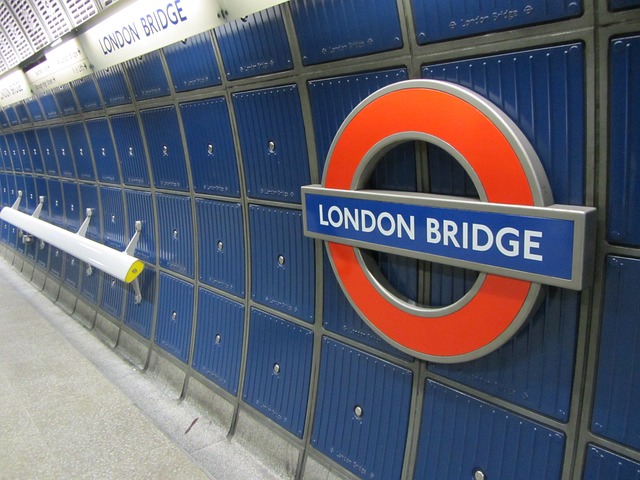Entrance signage is a multifaceted element that plays a pivotal role in an organization's branding and visitor experience. It acts as the initial visual representation of a company, setting the tone for brand identity through consistent use of colors, typography, and imagery. The strategic design of these signs is crucial for creating a cohesive and memorable impression, guiding visitors, and conveying expectations about the business's professionalism and status. Entrance signage also enhances safety by facilitating efficient navigation, especially during varying lighting conditions, and supports accessibility compliance for individuals with disabilities. Moreover, these signs are integral to emergency preparedness by marking evacuation routes and assembly points clearly. In essence, entrance signage is a critical investment that combines aesthetic appeal with practical functionality, ensuring effective communication and navigation while reinforcing brand presence from the moment visitors arrive. It's an indispensable tool for operational efficiency and safety within any facility. Keywords: Entrance signage, brand identity, navigational directive, accessibility, legal compliance, safety, visibility, architectural integration, material selection, color and typography, legibility, illumination features.
—-
Effective entrance signage serves as a pivotal visual handshake, extending a brand’s identity and making an immediate impact on visitors. This article delves into the critical role of entrance signage in shaping first impressions, ensuring practical aspects like navigation, safety, and accessibility, and mastering design to harmonize aesthetics with functionality. Understanding these components can significantly enhance any establishment’s curb appeal and visitor experience. By exploring each facet, businesses and organizations can harness the power of entrance signage to leave a lasting impression that resonates with their audience and solidifies their brand presence.
—-
- The Role of Entrance Signage in Brand Identity and First Impressions
- Practical Aspects of Entrance Signage: Navigating, Safety, and Accessibility
- Design Considerations for Effective Entrance Signage: Blending Aesthetics with Functionality
The Role of Entrance Signage in Brand Identity and First Impressions

Entrance signage plays a pivotal role in establishing and reinforcing brand identity for any organization, be it a corporation, a retail establishment, or a service provider. These signs serve as a tangible representation of the company’s image and values, greeting visitors with a clear and recognizable emblem or logo that is synonymous with the brand. They are not mere directional indicators; they are the first point of visual communication between the entity and its audience. The design of entrance signage should be cohesive with the overall branding strategy, utilizing color schemes, typography, and imagery that align with the company’s marketing materials. This consistency is crucial in creating a strong and lasting impression, ensuring that the brand remains top-of-mind for customers even before they step inside.
Moreover, entrance signage is instrumental in setting expectations and conveying the level of professionalism one can anticipate from the business. A well-designed and strategically placed entrance sign can effectively communicate the brand’s status, whether it be a luxury boutique or a cutting-edge tech startup. It not only marks the boundary between public and private space but also sets the tone for the experience that awaits within. For this reason, businesses must invest in entrance signage that is not only visually appealing but also functional, ensuring that it can be seen from a distance and is legible to all potential visitors. This investment pays off through the creation of a memorable brand experience that starts at the first point of contact, often before a customer has even entered the premises.
Practical Aspects of Entrance Signage: Navigating, Safety, and Accessibility

Entrance signage plays a pivotal role in ensuring that individuals can navigate to their intended destinations with ease and confidence. These signs are the first visual point of contact for visitors, clients, or patrons upon approaching a building or complex, providing clear and concise directional information. From a practical standpoint, effective entrance signage is instrumental in guiding foot traffic during both daylight and nighttime conditions, facilitating safe and efficient movement within and around the premises. It delineates entry points, which is crucial for maintaining orderly flow of people, especially in crowded or high-traffic areas. Moreover, entrance signs contribute to accessibility by indicating accessible entrances for individuals with disabilities, ensuring compliance with legal standards and promoting inclusivity. By providing unambiguous directional cues, these signs not only enhance the user experience but also support emergency response efforts by clearly marking evacuation routes and assembly points. Incorporating entrance signage that is well-designed and strategically placed is essential for maintaining a smooth operational environment, contributing to the overall functionality and safety of any facility.
Design Considerations for Effective Entrance Signage: Blending Aesthetics with Functionality

Entrance signage serves a dual purpose, seamlessly blending aesthetic appeal with functionality to create an immediate and lasting impression on visitors and passersby. The design of entrance signage must take into account the architectural style of the building or complex it represents, as well as the surrounding environment. Utilizing materials that complement the architecture, such as durable metals for a modern look or classic stone for a traditional setting, ensures that the signage not only withstands the elements but also enhances the visual appeal of the entrance.
Color choices and typography are critical components in designing effective entrance signage. Colors should be bold yet harmonious with their surroundings to attract attention without overwhelming the landscape. Typography must be legible from a distance, ensuring clarity for drivers and pedestrians alike. The arrangement of text and graphics on the sign should prioritize readability; important details like the name of the business or facility should be prominently displayed, while additional information can be presented in a clear hierarchy. Reflective materials and illumination options are also important considerations to ensure visibility during different lighting conditions. By carefully integrating these design elements, entrance signage not only fulfills its role as a directorship tool but also becomes an extension of the brand’s identity, making a memorable first impression that lasts.
Entrance signage serves as a pivotal element in both reinforcing brand identity and ensuring practical aspects such as navigation, safety, and accessibility. As discussed, well-designed entrance signs are instrumental in creating a lasting first impression that can significantly influence public perception. Aesthetic elements must harmonize with functionality to facilitate ease of use while maintaining visual appeal. Incorporating these considerations into entrance signage design is not just beneficial but indispensable for any business or institution aiming to make an impact and cater to diverse user needs. As a conclusion, it’s evident that the strategic implementation of entrance signage is crucial for enhancing brand visibility, improving user experience, and contributing to overall accessibility. Businesses should invest in entrance signage that not only reflects their brand but also meets the practical demands of their clientele.



